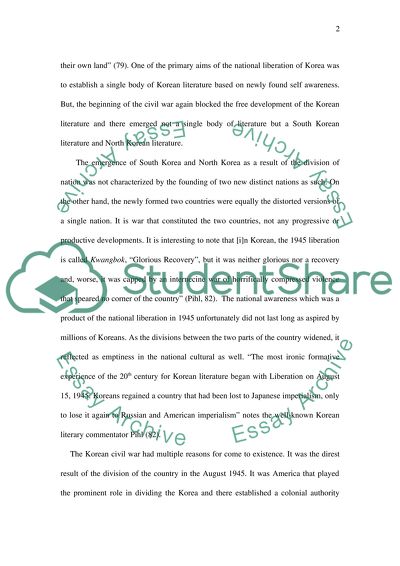Cite this document
(The Story of the Creation of Two States in the Korean Peninsula Essay Example | Topics and Well Written Essays - 2000 words, n.d.)
The Story of the Creation of Two States in the Korean Peninsula Essay Example | Topics and Well Written Essays - 2000 words. https://studentshare.org/environmental-studies/1411313-the-story-of-the-creation-of-two-states-in-the-korean-peninsula
The Story of the Creation of Two States in the Korean Peninsula Essay Example | Topics and Well Written Essays - 2000 words. https://studentshare.org/environmental-studies/1411313-the-story-of-the-creation-of-two-states-in-the-korean-peninsula
(The Story of the Creation of Two States in the Korean Peninsula Essay Example | Topics and Well Written Essays - 2000 Words)
The Story of the Creation of Two States in the Korean Peninsula Essay Example | Topics and Well Written Essays - 2000 Words. https://studentshare.org/environmental-studies/1411313-the-story-of-the-creation-of-two-states-in-the-korean-peninsula.
The Story of the Creation of Two States in the Korean Peninsula Essay Example | Topics and Well Written Essays - 2000 Words. https://studentshare.org/environmental-studies/1411313-the-story-of-the-creation-of-two-states-in-the-korean-peninsula.
“The Story of the Creation of Two States in the Korean Peninsula Essay Example | Topics and Well Written Essays - 2000 Words”. https://studentshare.org/environmental-studies/1411313-the-story-of-the-creation-of-two-states-in-the-korean-peninsula.


